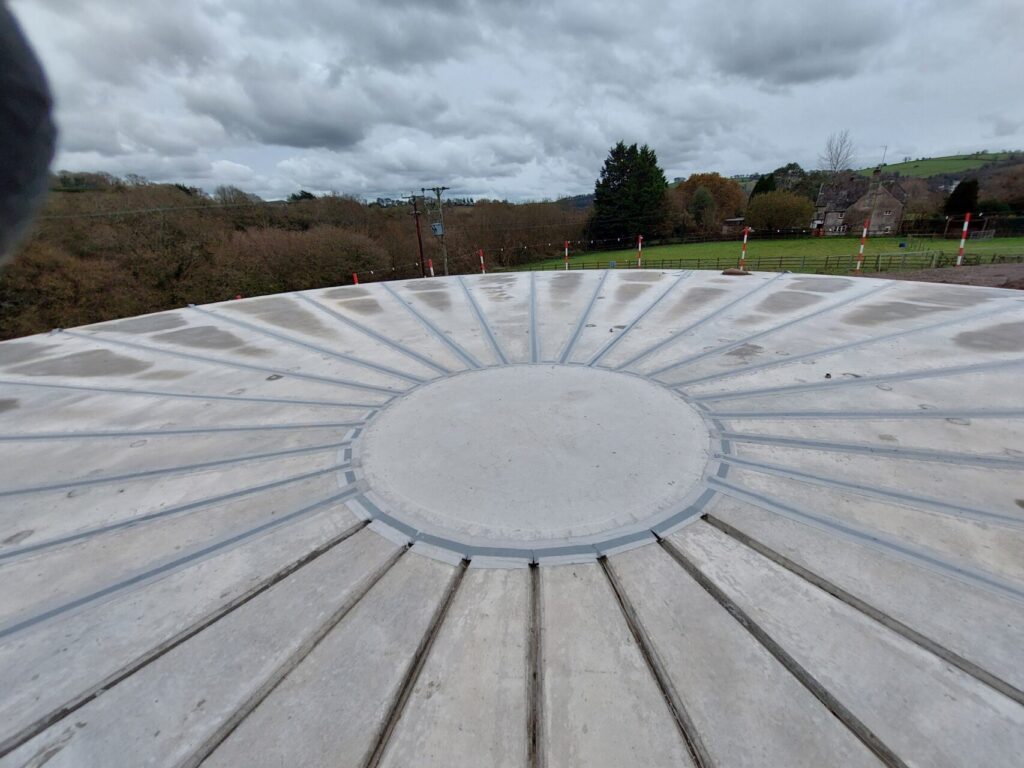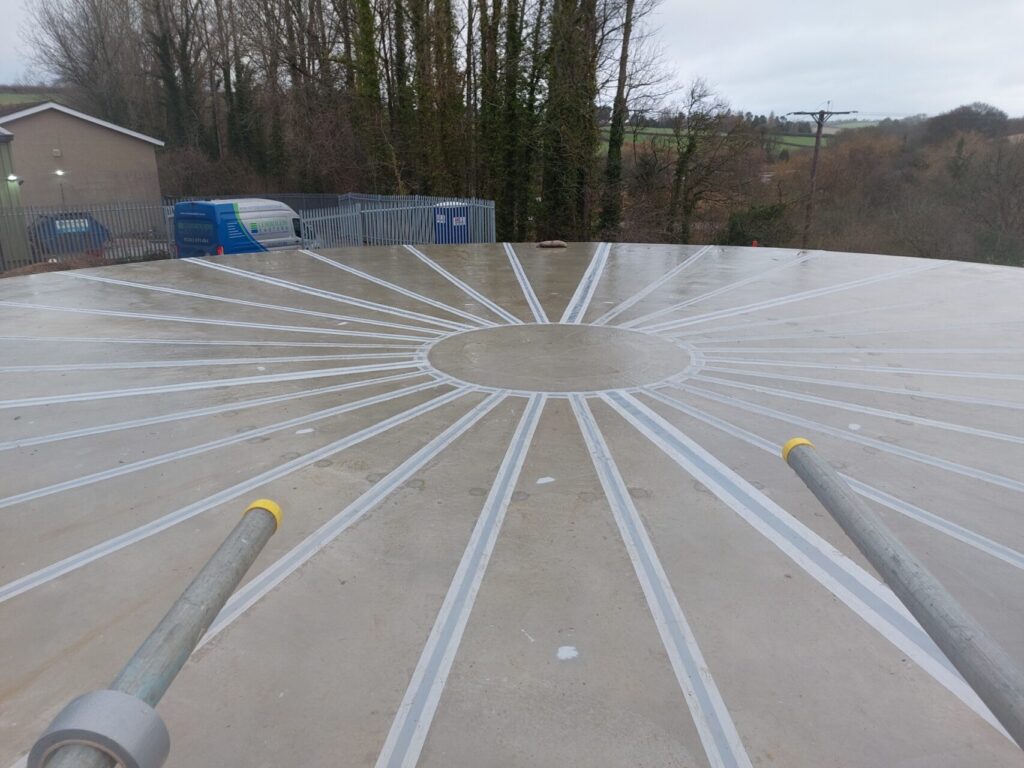Climatic monitoring was instigated to ensure that the manufacturers instructions for use (IFU) were strictly adhered to.
As per the manufacturers recommendations the areas of the waterproofing bandage not to be bonded were masked off with tapes prior to installation. The central section of the bandage is deliberately not adhered in order to allow maximum elongation over a free moving area.
The width of bandage employed had to be varied in order to ensure proper adhesion either side of the panel gaps which was of varying widths.
A challenge for this waterproofing project was the access. With no edge protection in place we had to install approved anchor points and work from safety lines in a restraint function, utilised in such a manner that it was not physically possible to fall over the edge.
In total 3 tank roofs were waterproofed in this manner across two sites in Devon and Cornwall.







